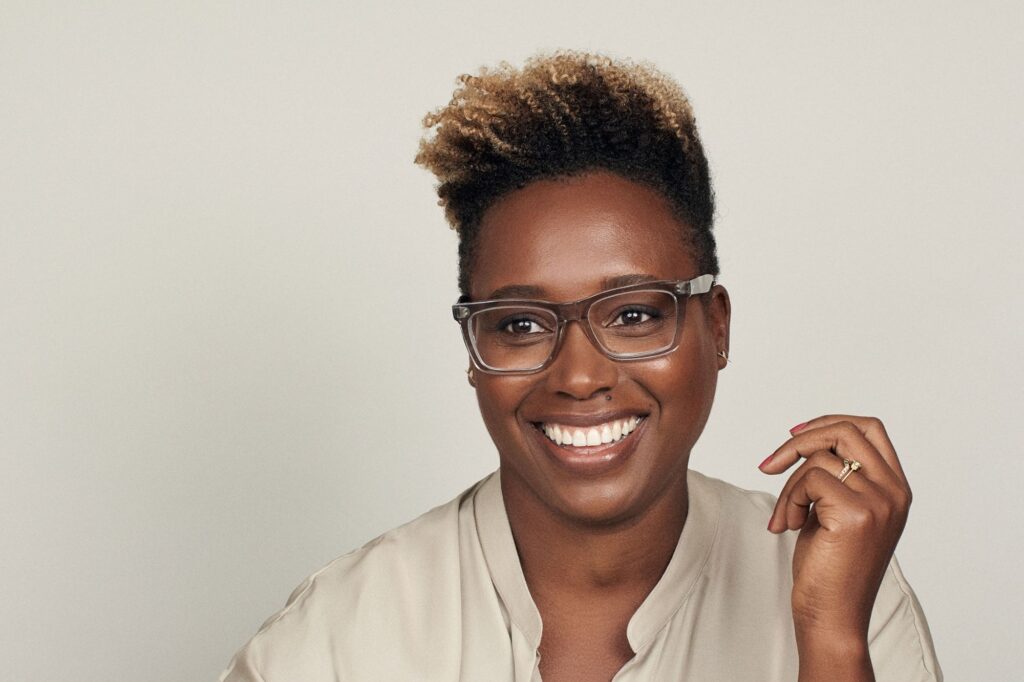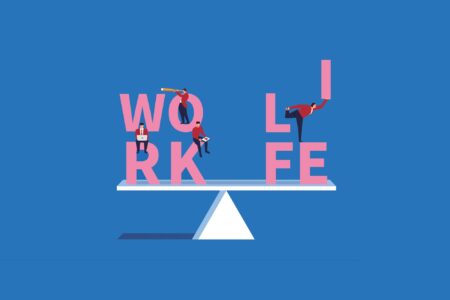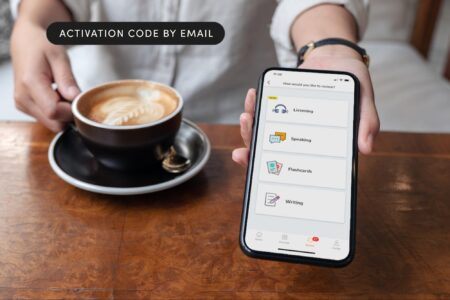Entrepreneur
“One of my earliest memories in the U.S. was that my mother banned beauty magazines in our home. She thought the language was too disparaging to women. She was right about that,” says Karen Young, CEO of OUI the People. “My mother didn’t want the world to decide who we were. She wanted us to decide on our own who we wanted to become.”
Young launched OUI the People, her beauty brand, with $1,500 in her bank account. The original products — razors — were a nod to her grandmother and uncles in Guyana. As a child, Young was in awe of their skincare routines and the joy she witnessed in these moments at the bathroom sink. Her uncles would be focused on shaving, and her grandmother would pay close attention to her body care routine.
“My grandmother made sure I was slathered in coconut oil,” says Young. “My family was obsessed with caring for the body. It was an expression of self-love and care for others as well. OUI the People is a celebration of that softness and strength.”
Image credit: Maria Be
Young remains committed to creating products that nourish “you and your body, instead of making you feel less-than with marketing terms like ageless and flawless,” like those magazines her mother once shielded her from. On her journey to disrupt the beauty industry, here are three lessons Karen Young shares.
Related: Growing Up, She Was Bullied For Embracing Her Indian Heritage. Now Celebrities Like Mindy Kaling Wear Her Indian-American Fashion Brand — and She’s Aiming for Retail Stores Next.
1. Persevere in the face of setbacks
August is National Black Business Month in the U.S., a time when we celebrate and support over 3.5 million businesses that are Black-owned. In 2004, Frederick E. Jordan partnered with John William Templeton to turn August into National Black Business Month. Jordan and Templeton wanted to highlight Black founders and encourage communities to support their businesses. And support for Black-owned businesses can’t be a check-the-box exercise only for this month; it must be a year-round commitment.
In 2010, Jordan told Black Enterprise, “It’s very difficult for black businesses to survive. Their obstacles are enormous.” Two decades later, Jordan’s comments still ring true.
Unfortunately, the decline in funding to Black-founded companies drastically outpaces the overall decline in startup capital in the marketplace. “While total venture dollars in the U.S. fell 37% last year, funding to Black-founded startups dropped a staggering 71%,” according to Crunchbase data. In 2023, total U.S. investment in Black-founded startups marked the lowest amount since startups raised only $582 million in 2016.
“There’s a marked recession within a recession that Black women founders in particular are facing,” says Young. “The clawback of the capital has been visible and painful for many of us.”
As a Black woman founder, Young also shares her experience facing stereotypes when meeting with investors.
“It’s a latent disbelief that a woman of color can build a company that appeals to all consumers. There’s an undertone that only other people of color will find what we build of value or that it’s not big enough of a market,” says Young. “Thankfully, our data proves that wrong. And it can be difficult when someone comes to the table with a deeply rooted false perception and we persevere.”
Related: After Her Unexpected Layoff, This Founder’s Love of Fragrances and Self-Care Helped Her Cope. Now She’s Disrupting the Fragrance Industry.
2. Lean into the power of packaging
Young spent four years at Estée Lauder on the packaging design team. She raised her hand for a multitude of projects, was always asking questions and studied everything she could.
“I stuck my nose in wherever I could to learn as much as I could as fast as I could,” says Young. “I completely fell in love with branding at Lauder, and particularly packaging. It’s the last and final step of the story, and sometimes overlooked.”
OUI the People packaging across various product lines is bold, stands out, and is refreshing. It’s clear what the product does and why the consumer would buy it. Young advises founders to lean into the power of packaging; not to overlook or dismiss it.
“You may only have two to three inches of surface space to work with,” she says. “A consumer picks up your package and that’s the moment of truth. What’s on that package may determine at that moment whether they buy your product or not.”
3. Avoid the trap of launching too many products at once
“One of the mistakes I made is launching too many products at one time,” says Young. “I reminded myself that customers can only consume so much. As a founder, every product I put out is an act of love and dedication. But the consumer’s journey usually only starts with one product.”
Young marvels at the beauty industry; how fast paced it is and how much innovation hits the marketplace. And as a brand directly selling to consumers, Young says it has become easier to take an amazing concept to market relatively quickly. She recalls launching multiple body scrubs based on marketplace trends. A popular influencer called out one of the scrubs as her favorite, and sales spiked at Sephora. Young had to make the difficult decision to discontinue one of the products; it wasn’t profitable.
“Don’t be afraid to do one thing very well,” says Young.
Related: This Award-Winning Korean Chef Says Entrepreneurship Is Glamorized. Her Recipe For Success? Hard Work and Consistency.
Now, OUI the People is projected to grow 2x this year and the brand will scale from 260 retail doors to over 600. Young has raised venture capital in the past, but timing is everything, and it has been challenging to meet the distribution opportunities with no additional capital infusion.
“Just as we have had incredible growth via retail, the doors have been shut tight on funding. We’re pacing ourselves, including saying no to certain opportunities that could put too much tension on the business. Despite the current climate, I know we’ll persevere,” says Young.
This WOMEN ENTREPRENEUR® article is part of our ongoing series highlighting the stories, challenges and triumphs of running a business as a woman.
Read the full article here










